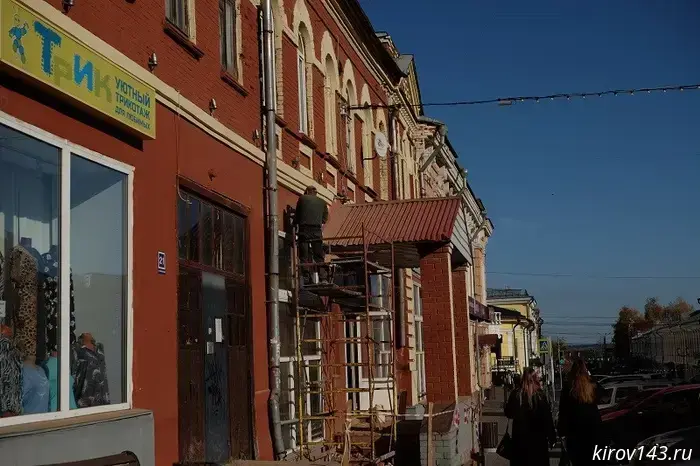
We're losing them.
We continue a series of publications about the historical sites of our city. The deeper we delve into this topic, the more we question the priorities of our officials’ work. What is it: ignorance or plain neglect? How can one ignore the facts of damage and, yes, the loss of such historical objects, of which there are not many left?
Merchant Silin’s house on Spasskaya 21: desolation in the center of Kirov
This charismatic house has, without exaggeration, long since become almost the embodiment of merchant Vyatka. A two-storey red-brick building with commercial premises on the ground floor was erected for the merchant Alexander Ivanovich Silin in 1895–1899. Yet, despite the fact that today the structure is regarded as an important urban-forming object of Kirov’s historic center, it continues to fall into ruin.
Historical context
From the moment it was built the building housed retail establishments: the tea shop of the heirs of merchant P. P. Kolokolnikov, the fashionable haberdashery of merchant M. A. Korobov and the shop “Central Depot.” In 1902 a hotel called “Central Rooms” opened on the second floor, later renamed “Siberian Rooms” under merchant A. A. Khokhryakov.
In 1906 Silin rented the house to a branch of the Siberian Commercial Bank, which operated here until 1912. After 1918 the building was municipalized; on the ground floor during the Soviet period there were shops, including “Books” and a military goods store (“Voentorg”).
Legal and technical status
The house is listed as a multi-apartment building; the year of construction is given as 1905 (dating from the technical inventory; historical sources give a range of 1895–1899); condition — emergency/unsafe, with estimated wear of approximately 50% (according to open data). The object is experiencing structural problems (roof leaks, deterioration of plaster, local deformations), which, in the absence of comprehensive restoration, pose risks of further loss of the “historic fabric.”
Significance for the urban environment
As professionals explain, Silin’s house is a “pivotal” object for the façade composition and scale of Spasskaya Street, shaping its historical panorama and recalling the merchant phase of Vyatka’s development. Buildings like this create the “readability” of pre-revolutionary city blocks and set standards for restoration responsibility — from preserving masonry and plaster profiles to reconstructing the ground-floor shopfront line. Its status as an urban-forming object and its historical functions (trade, hotel, bank) make it a focal point for future revitalization projects of the central pedestrian axis.
And even if the building’s façade has been tidied up hastily, once you pass through the arch into the courtyard the observer is confronted with a picture that could shock even a fairly resilient psyche: the building is literally turned inside out, it is “sick” and has been for a long time… Bricks are falling out, and the second floor is on the verge of collapsing along with the roof.
Interestingly, in 2024 the city manager Vyacheslav Simakov signed a decree according to which “the owners of the premises shall carry out the reconstruction of the multi-apartment building located in the Pervomaysky district of the city of Kirov at the address: Kirov, Spasskaya Street, house 21, within six months from the date of issuance of this decree.” This directive is to be delivered by the Kirov Housing Administration, and the process is to be supervised by the first deputy head of the city administration.
So a solution has apparently been found, and the guilty parties seem to have been identified in advance. It is, to put it mildly, unclear from what funds the owners are supposed to carry out the reconstruction.
Houses with unique carving on the verge of death
On Vsesvyatskaya Street (formerly Derendyaev), quietly and right under the regional authorities’ noses, two more houses are collapsing — the ensemble of merchant Lebedev’s estate. Today they look like wrecks, but in essence they are rare witnesses of the era when Vyatka’s wooden architecture reached its peak.
The history of the houses goes back to the first half of the 19th century, when the future estate site belonged to the Korelsky family, then the Shubins and the Lozhkins. In 1895 the owner became merchant Ivan Ivanovich Lebedev — an honorary citizen of Vyatka, a member of the prosperous class, an active and enlightened man.
He rebuilt the old wooden houses, added a second floor, ceremonial porches and rich decorative finishes. The reconstruction carried out in 1902–1910 gave the ensemble the traits of a late 19th-century urban estate — a combination of simplicity of form and exquisite carving.
Lebedev’s house became a kind of cultural center: the poet and geographer Pavel Dravert, the artist and orientalist Fyodor Gogel, and Evgenia Gogel, the first head of the Herzen Library, were among those who visited. These names are woven into the fabric of the house’s history, giving it not only architectural but also spiritual value.
Architecture and details
The ensemble includes two wooden houses on stone foundations, clad with boards, with rich carved window surrounds, cornices and paneled doors.
But its main value is the window surrounds: an example of the so-called iconostasis carving, executed by masters who worked on church iconostases. And most importantly — such an example of carving can no longer be found in Kirov! According to local historians V. A. Lyubimov and G. Ya. Lopatin, Lebedev’s houses are the last surviving examples of such a high level of artistic woodwork.
The architectural appearance of the estate preserves the spirit of old Vyatka: strict proportions, gentle lines, the light and shadow of the lace-like window surrounds — all of this reminds us that wooden architecture was once the chief expresser of the city’s beauty.
Condition and prospects
Today the houses are vacated and require restoration. According to Kirov administration documents (2017–2018), the buildings were declared emergency, however the main structures and decorative elements have been preserved in satisfactory condition: foundations, load-bearing walls, floors and authentic carving.
In 2022 a historical and cultural examination led by E. E. Barutkina confirmed the architectural, historical and artistic value of the ensemble.
However, time is passing and the unique carving is deteriorating.
Preserving this object is not a formality but a matter of continuity and respect for a city in which every carved detail bears the traces of hands and time. With the loss of such objects, our city loses not just an architectural monument — with them dies part of Vyatka’s ancient soul.
Divide and sell
In the autumn of 2023 members of the City Duma’s commission on property and land relations reported that both buildings of the Lebedev estate were planned to be leased at a preferential rate: 1 ruble per 1 sq. m. The lease term was to be 49 years. The buildings were to be leased together with the land plots on which they stand. However, there were no takers for the old houses, which were already in an emergency state and required colossal investments. Moreover, at the commission meeting it became known that an offer had recently been submitted to the city administration to purchase at least one of the buildings. Deputies noted that the question of leasing these buildings need not be considered. As officials pointed out, leasing the buildings “will bring nothing to the administration,” whereas by selling the estate one could “get money now.”
The sale of cultural heritage objects dragged on: several times the Kirov mayor’s office announced an auction for the sale of the two houses of merchant Lebedev’s estate. As a result, in April 2024 one of the houses was sold. One of the buildings was purchased by Terra Med LLC for 7,072,000 rubles. There apparently were no interested buyers for the second house.
Другие Новости Кирова (НЗК)
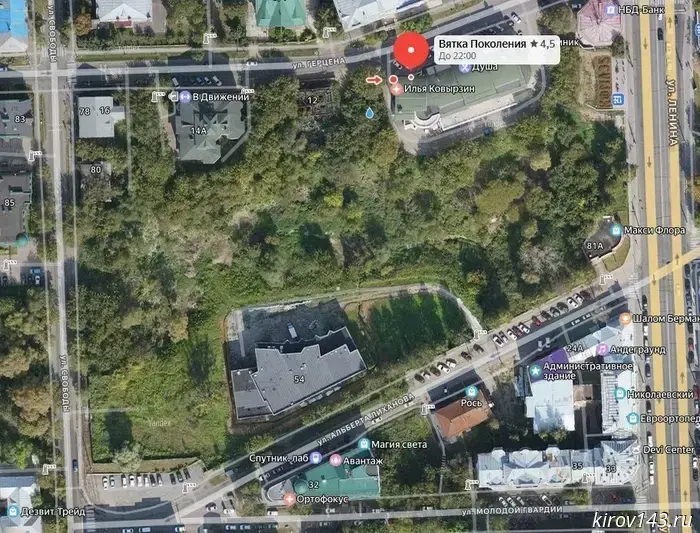 Residents of Kirov are invited to clean up the Zasor Ravine.
There will be another community clean-up in Kirov on Saturday.
Residents of Kirov are invited to clean up the Zasor Ravine.
There will be another community clean-up in Kirov on Saturday.
 In Kirov, a vigilant bank employee saved a pensioner from losing 1.5 million rubles.
An elderly resident of Kirov nearly became the victim of phone scammers who posed as a school principal and an "FSB officer."
In Kirov, a vigilant bank employee saved a pensioner from losing 1.5 million rubles.
An elderly resident of Kirov nearly became the victim of phone scammers who posed as a school principal and an "FSB officer."
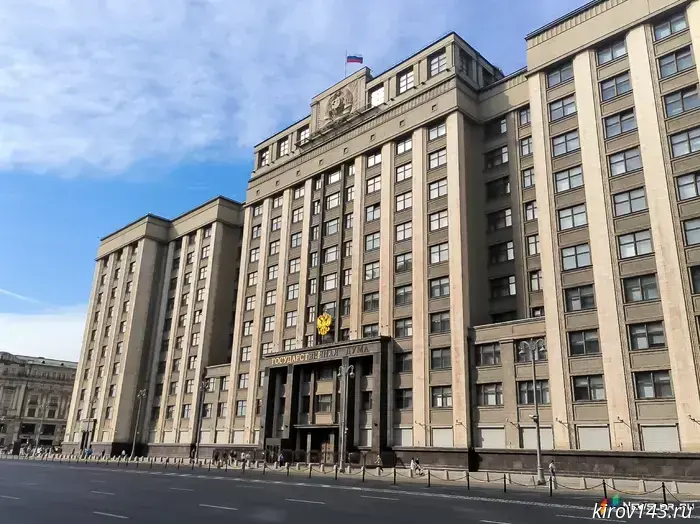 The State Duma supported a bill on mandatory targeted training for students at medical universities.
The State Duma of Russia passed a bill in the first reading that requires state-funded students at medical and pharmaceutical universities to sign a contract for targeted training.
The State Duma supported a bill on mandatory targeted training for students at medical universities.
The State Duma of Russia passed a bill in the first reading that requires state-funded students at medical and pharmaceutical universities to sign a contract for targeted training.
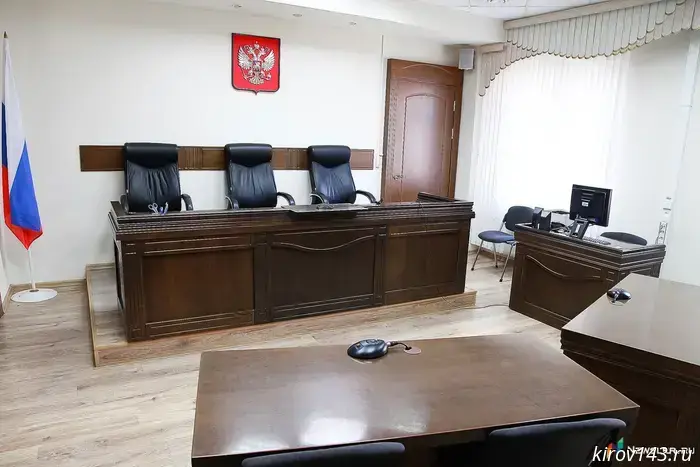 The court ordered the Kirov contractor to return the advance payment he had received.
The company "Voskhod 43" failed to obtain full payment for its work and lost what it had previously received.
The court ordered the Kirov contractor to return the advance payment he had received.
The company "Voskhod 43" failed to obtain full payment for its work and lost what it had previously received.
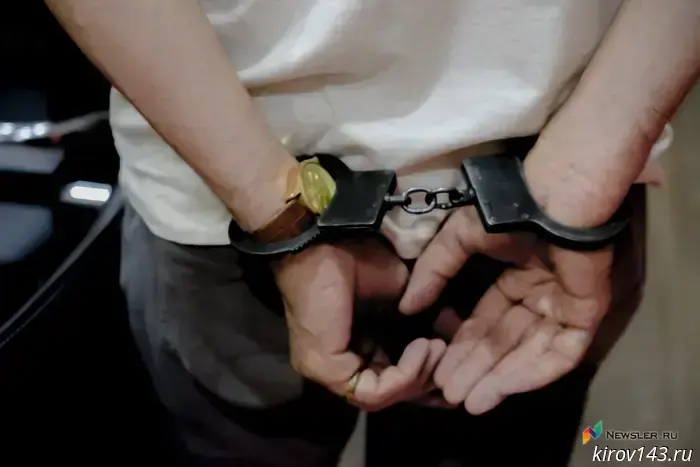 In Kirov, a repeat offender nicknamed "Sweet Tooth" stole 35 chocolates and a pack of gum.
In Kirov, a 39-year-old man was convicted after he couldn't resist sweets and was caught shoplifting again.
In Kirov, a repeat offender nicknamed "Sweet Tooth" stole 35 chocolates and a pack of gum.
In Kirov, a 39-year-old man was convicted after he couldn't resist sweets and was caught shoplifting again.
 Russia will inspect 51 airlines due to an increase in the number of aviation incidents.
From December 1, 2025 to December 1, 2026, Russia will conduct large-scale inspections of 51 regional airlines.
Russia will inspect 51 airlines due to an increase in the number of aviation incidents.
From December 1, 2025 to December 1, 2026, Russia will conduct large-scale inspections of 51 regional airlines.
We're losing them.
The historic houses — symbols of Vyatka’s merchant class — continue to decay. And this despite the fact that they are located in the very center of Kirov. With their loss, under the cold gaze of the authorities, the soul of our city is gradually dying.
